NSIMA: Seeding hope for smallholder farmers through partnerships
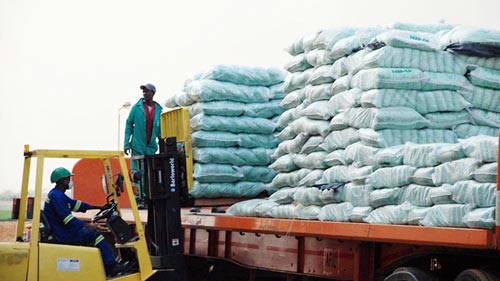 To achieve food security, smallholder farmers in Southern Africa require access to improved seed and inputs for higher yields. “Seed is one of the key movers in agricultural development,” says John MacRobert, New Seed Initiative for Maize in Southern Africa (NSIMA) leader, indicating the importance of going beyond developing improved seed varieties to encompass their dissemination, promotion, and adoption in developing strategies around seed development. These issues, together with NSIMA’s to date progress (the project is in its third phase) and strategies for the next phase, were discussed at a meeting in Lusaka, Zambia, during 7-9 August 2013. About 50 participants from institutions collaborating on the project led by CIMMYT and funded by the Swiss Agency for Development and Cooperation (SDC) were present; among them were representatives from national agricultural research institutes, seed companies, and institutions of higher learning from Angola, Botswana, Democratic Republic of the Congo, Lesotho, Malawi, Mozambique, Swaziland, South Africa, Zambia, and Zimbabwe.
To achieve food security, smallholder farmers in Southern Africa require access to improved seed and inputs for higher yields. “Seed is one of the key movers in agricultural development,” says John MacRobert, New Seed Initiative for Maize in Southern Africa (NSIMA) leader, indicating the importance of going beyond developing improved seed varieties to encompass their dissemination, promotion, and adoption in developing strategies around seed development. These issues, together with NSIMA’s to date progress (the project is in its third phase) and strategies for the next phase, were discussed at a meeting in Lusaka, Zambia, during 7-9 August 2013. About 50 participants from institutions collaborating on the project led by CIMMYT and funded by the Swiss Agency for Development and Cooperation (SDC) were present; among them were representatives from national agricultural research institutes, seed companies, and institutions of higher learning from Angola, Botswana, Democratic Republic of the Congo, Lesotho, Malawi, Mozambique, Swaziland, South Africa, Zambia, and Zimbabwe.
“Some of the challenges of the maize crop can be addressed by research,” said Moses Mwale, Zambia Agricultural Research Institute (ZARI) director, during the opening ceremony. “The rest can be addressed by other players in the maize sector,” he added, emphasizing the importance of collaboration within the maize seed value chain. Challenges such as variable distribution of rainfall, low soil fertility, and heat and drought stress can be addressed by improved varieties from CIMMYT-led projects including the Drought Tolerant Maize for Africa (DTMA) and Improved Maize for African Soils (IMAS). Other climate-change related issues in small-scale farming could be confronted via conservation agriculture. For example, cover crops and crop residue left on the soil help to retain moisture and thus mitigate the impact of droughts.
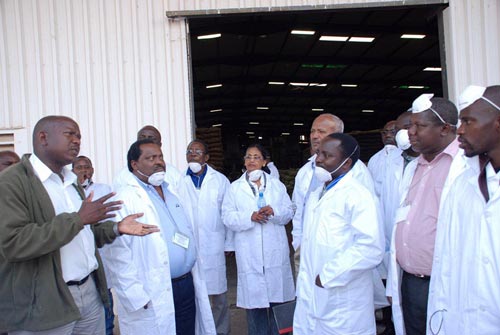 But do smallholder farmers have access to the new seeds, technologies, and information? The answer is often no. “Integrating stress tolerant maize and legumes, such as pigeon peas, beans, and cowpeas, leads to sustainable production systems. We need effective seed road maps to enhance access and availability of improved maize and legume seeds,” CIMMYT regional director for Southern Africa Mulugetta Mekuria said, giving an example of one such gap in the system.
But do smallholder farmers have access to the new seeds, technologies, and information? The answer is often no. “Integrating stress tolerant maize and legumes, such as pigeon peas, beans, and cowpeas, leads to sustainable production systems. We need effective seed road maps to enhance access and availability of improved maize and legume seeds,” CIMMYT regional director for Southern Africa Mulugetta Mekuria said, giving an example of one such gap in the system.
Seed companies and community-based organizations producing seed play a very significant role in fixing these issues. Nelson Munyaka from the SDC Seeds and Markets Project spoke of the success of Zaka Superseeds, a nascent seed company that transformed from a community seed enterprise. MacRobert agreed: “In Benin and Congo, where we do not have seed companies, the community seed producers could learn from Zaka’s experience and grow into full-fledged seed businesses with the proper structures.” DTMA project leader Tsedeke Abate added that mainstreaming drought tolerant maize varieties in the product portfolio of seed enterprises could have a significant impact.
Policy makers in the seed value chain must be engaged as well. “Many projects do not seem to believe in smallholder ability,” said consultant Michael Jenrich. The policies that govern the seed trade tend to vary among the Southern African Development Community (SADC) countries. An SDC-funded initiative to implement harmonized seed laws in all SADC countries to facilitate easier intra-regional seed movement is currently under way. “So far, 10 countries have signed the memorandum of understanding,” said K C Kawonga, SADC Seed Centre interim coordinator. Such laws would enhance seed trade and contribute to food security by ensuring farmers’ access to improved seed, especially during times of disaster.
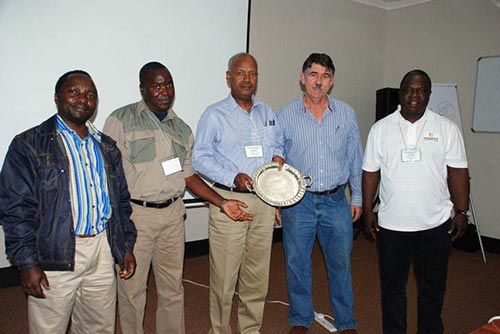 “Private sector players steer away from smallholders viewing them as high risk because of their poor infrastructure, lack of credit, and land tenure, while governments may not view them as a viable investment,” Jenrich summarized the lack of interest in smallholders’ problems. Zaka Superseeds proves them wrong; cooperating with smallholders can, in fact, be beneficial for seed companies, as they can work more closely with the community consuming their seed. Zaka, for example, is removing a product from its selection after consultations with the community during which they found out the discussed maize variety has a long maturity period and is thus undesirable.
“Private sector players steer away from smallholders viewing them as high risk because of their poor infrastructure, lack of credit, and land tenure, while governments may not view them as a viable investment,” Jenrich summarized the lack of interest in smallholders’ problems. Zaka Superseeds proves them wrong; cooperating with smallholders can, in fact, be beneficial for seed companies, as they can work more closely with the community consuming their seed. Zaka, for example, is removing a product from its selection after consultations with the community during which they found out the discussed maize variety has a long maturity period and is thus undesirable.
The meeting ended on a high note with the announcement of the 2012 DTMA Breeding and Dissemination Awards winners. Malawi won first prize for both categories; the breeding award runners-up were Zambia and Zimbabwe, and Zimbabwe also took second position in drought tolerant technologies dissemination.
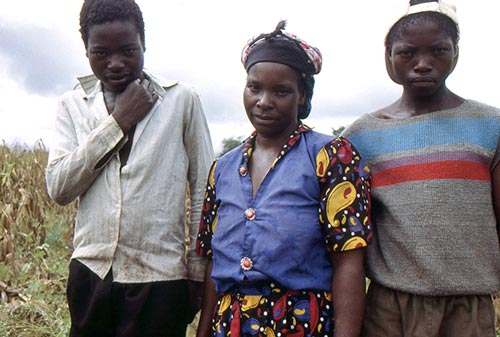 “Maize production is likely to suffer the most due to climate change compared to other crops in Southern Africa,” said CIMMYT physiologist Jill Cairns, who presented on CIMMYT work under the
“Maize production is likely to suffer the most due to climate change compared to other crops in Southern Africa,” said CIMMYT physiologist Jill Cairns, who presented on CIMMYT work under the 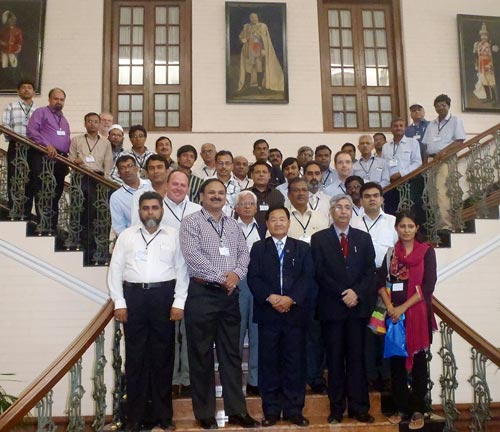 Scientists from the Heat Stress Tolerant Maize for Asia (HTMA) project and representatives from collaborating public and private sector institutions from the region,
Scientists from the Heat Stress Tolerant Maize for Asia (HTMA) project and representatives from collaborating public and private sector institutions from the region, 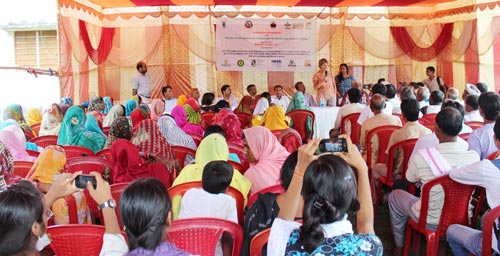 “Climatic extremes and variability are becoming more frequent and resulting in losses for farmers. This issue cannot be addressed in isolation; it needs collective participation of all stakeholders, at all levels,” stated Clare Stirling, leader of the CIMMYT component of the Climate Change, Agriculture and Food Security (CCAFS) CRP, at a stakeholder consultation on ‘Climate Smart Agricultural Technologies for Smallholder Farmers of Bihar’ held on 22 July 2013.
“Climatic extremes and variability are becoming more frequent and resulting in losses for farmers. This issue cannot be addressed in isolation; it needs collective participation of all stakeholders, at all levels,” stated Clare Stirling, leader of the CIMMYT component of the Climate Change, Agriculture and Food Security (CCAFS) CRP, at a stakeholder consultation on ‘Climate Smart Agricultural Technologies for Smallholder Farmers of Bihar’ held on 22 July 2013.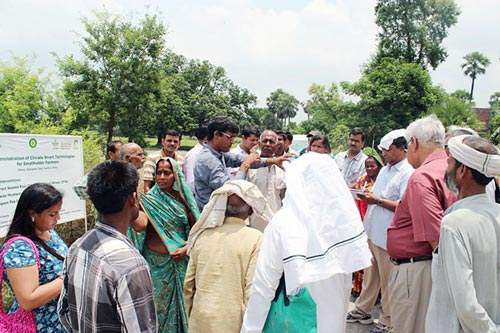 The lively discussions included almost 200 participants, including innovative CSV farmers from Bhatthadasi, Rajapakar, and Mukundpur (Vaishali district); agriculture advisors from various Village Panchayats; climate smart farmer groups, research students, and local service providers. M.L. Jat, CIMMYT-CCAFS South Asia Leader, explained the concept of CCAFS CSVs in South Asia, and the key climate smart activities they are implementing for the benefit of smallholder farmers in Bihar’s Vaishali district. Participants visited demonstration plots where R.K. Jat, CIMMYT-BISA Cropping Systems Agronomist, showed how mechanization and conservation agriculture-based management practices are being implemented even on small, fragmented land holdings. By effectively ‘pooling’ their land for operational purposes, farmers have improved efficiency, reduced costs, and established timely crop management even with uncertain rainfall. R.K. Jat also explained the main advantages of the key climate smart interventions such as zero tillage, Direct Seeded Rice (DSR), raised bed planting, residue management, crop diversification, and nutrient management in managing climate risks and optimizing resources for higher profitability for the smallholders.
The lively discussions included almost 200 participants, including innovative CSV farmers from Bhatthadasi, Rajapakar, and Mukundpur (Vaishali district); agriculture advisors from various Village Panchayats; climate smart farmer groups, research students, and local service providers. M.L. Jat, CIMMYT-CCAFS South Asia Leader, explained the concept of CCAFS CSVs in South Asia, and the key climate smart activities they are implementing for the benefit of smallholder farmers in Bihar’s Vaishali district. Participants visited demonstration plots where R.K. Jat, CIMMYT-BISA Cropping Systems Agronomist, showed how mechanization and conservation agriculture-based management practices are being implemented even on small, fragmented land holdings. By effectively ‘pooling’ their land for operational purposes, farmers have improved efficiency, reduced costs, and established timely crop management even with uncertain rainfall. R.K. Jat also explained the main advantages of the key climate smart interventions such as zero tillage, Direct Seeded Rice (DSR), raised bed planting, residue management, crop diversification, and nutrient management in managing climate risks and optimizing resources for higher profitability for the smallholders.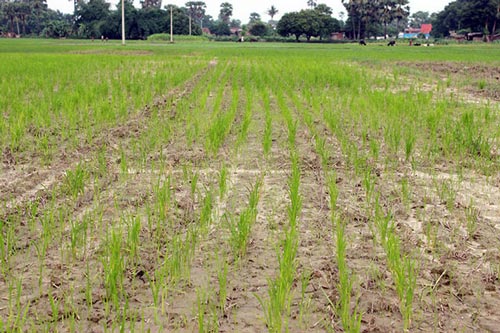 The active participation of about 80 female farmers allowed for a balanced and varied consultation. All the farmers expressed their concerns regarding climate variability and how it is affecting their livelihoods. They shared their experiences of turning their villages into CSVs, and how the new practices have benefitted them; after planting their wheat under zero till in the winter of 2012-13, farmers were initially skeptical of these changes to age-old practices, but having now reaped higher yields with less input costs, all the farmers have committed to planting under zero tillage next season. DSR has also been recently introduced, and the farmers thought the technology seemed promising in that it would reduce cultivation costs and provide some security under the increasing uncertainties of rainfall and labor shortages. The women farmers praised the intoduction of the ZT machine by CIMMYT under CCAFS. With many men migrating to cities, the women highlighted the reduced labor load with the increased availability of machinery and bed planting of maize and legumes.
The active participation of about 80 female farmers allowed for a balanced and varied consultation. All the farmers expressed their concerns regarding climate variability and how it is affecting their livelihoods. They shared their experiences of turning their villages into CSVs, and how the new practices have benefitted them; after planting their wheat under zero till in the winter of 2012-13, farmers were initially skeptical of these changes to age-old practices, but having now reaped higher yields with less input costs, all the farmers have committed to planting under zero tillage next season. DSR has also been recently introduced, and the farmers thought the technology seemed promising in that it would reduce cultivation costs and provide some security under the increasing uncertainties of rainfall and labor shortages. The women farmers praised the intoduction of the ZT machine by CIMMYT under CCAFS. With many men migrating to cities, the women highlighted the reduced labor load with the increased availability of machinery and bed planting of maize and legumes.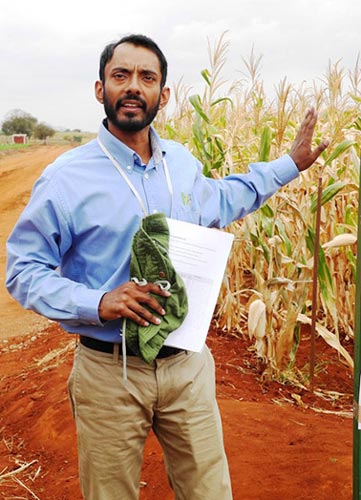 Big news for public and private maize breeders and seed providers in Africa: you can now test your lines and hybrids under controlled stress conditions that allow you to tell how they’ll perform when grown by farmers. The latest results from regional maize stress screening trials and other important topics formed the agenda of the annual meeting of the Improved Maize for African Soils (IMAS) project, which during 10-12 July 2013 drew more than 70 participants to its Nairobi venue, including representatives from CIMMYT, which leads the project, key partners
Big news for public and private maize breeders and seed providers in Africa: you can now test your lines and hybrids under controlled stress conditions that allow you to tell how they’ll perform when grown by farmers. The latest results from regional maize stress screening trials and other important topics formed the agenda of the annual meeting of the Improved Maize for African Soils (IMAS) project, which during 10-12 July 2013 drew more than 70 participants to its Nairobi venue, including representatives from CIMMYT, which leads the project, key partners 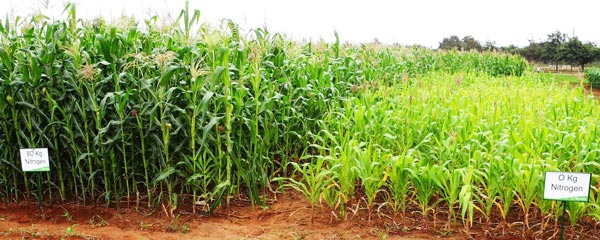
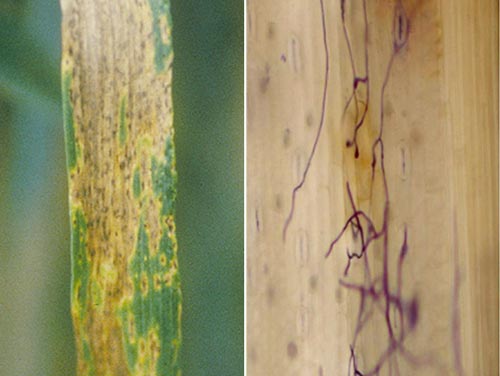 After screening some 500 wheat lines and varieties at 6 sites in Bangladesh, India, and Nepal, a group of scientists were able to identify 35 genotypes that resist spot blotch. This is the number-one disease of wheat in the Eastern Gangetic Plains, seriously damaging the crops of farmers—who are mostly smallholders—on some 9 million hectares.
After screening some 500 wheat lines and varieties at 6 sites in Bangladesh, India, and Nepal, a group of scientists were able to identify 35 genotypes that resist spot blotch. This is the number-one disease of wheat in the Eastern Gangetic Plains, seriously damaging the crops of farmers—who are mostly smallholders—on some 9 million hectares.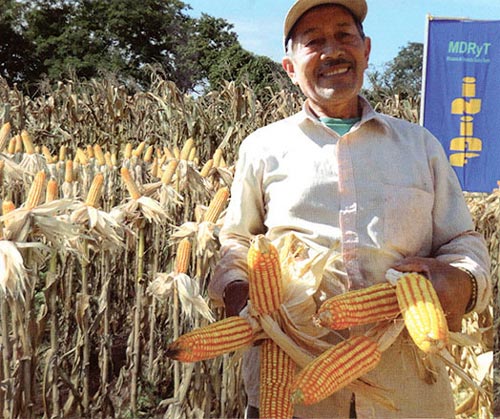 Bolivia’s National Institute for Agricultural, Livestock and Forestry Innovation (
Bolivia’s National Institute for Agricultural, Livestock and Forestry Innovation (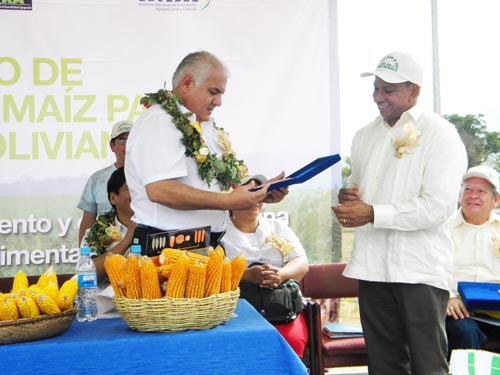
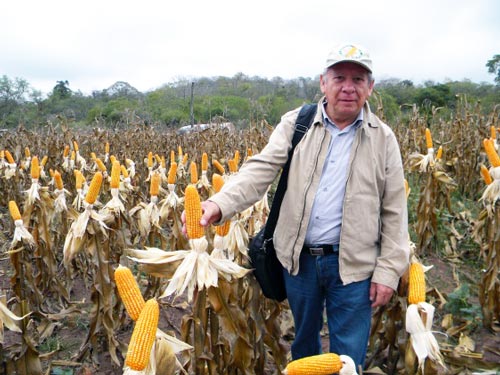
 The Nutrient Expert™ decision support tools for maize and wheat in India were officially launched for public use on 20 June 2013 at the National Agricultural Science Centre Complex in New Delhi during a meeting jointly organized by the International Plant Nutrition Institute (
The Nutrient Expert™ decision support tools for maize and wheat in India were officially launched for public use on 20 June 2013 at the National Agricultural Science Centre Complex in New Delhi during a meeting jointly organized by the International Plant Nutrition Institute (
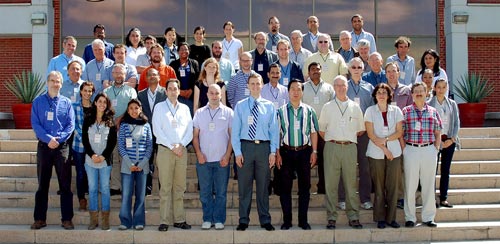 Hot models were the main topic of conversation at El Batan during 19-21 June 2013, when international experts from 18 leading research institutions participated in a workshop on “Modeling Wheat Responses to High Temperature.”
Hot models were the main topic of conversation at El Batan during 19-21 June 2013, when international experts from 18 leading research institutions participated in a workshop on “Modeling Wheat Responses to High Temperature.”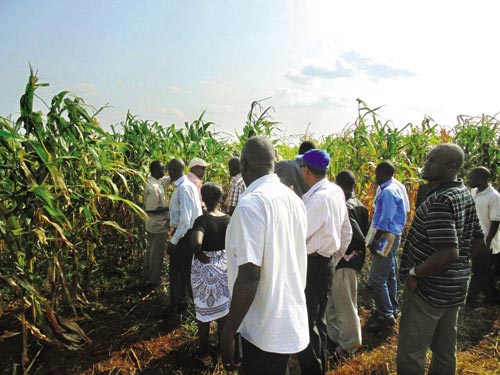
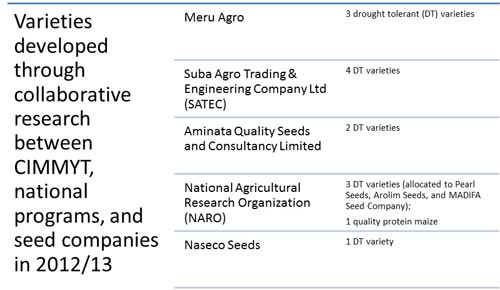
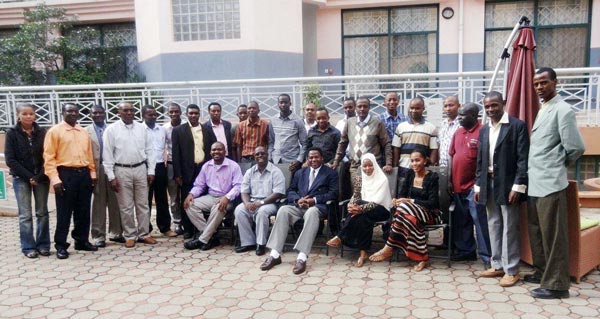
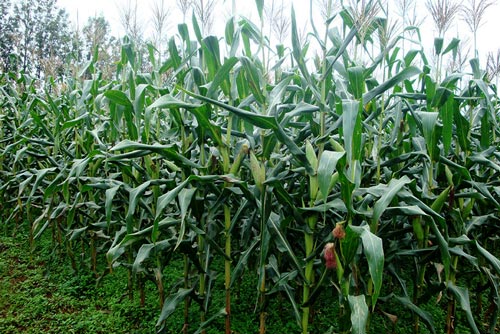
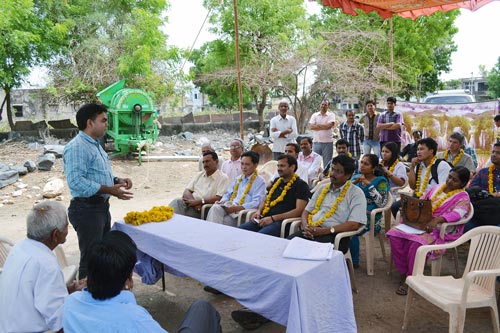 Rajasthan is one of the most stress-prone dry states of India, where farmers grow maize as major crop for food and domestic consumption. As such, it provided a perfect setting for the 2nd Annual Progress Review and Planning Meeting for the Abiotic Stress Tolerant Maize for Asia (ATMA) project. The meeting, jointly organized by the Maharana Pratap University of Agriculture and Technology (
Rajasthan is one of the most stress-prone dry states of India, where farmers grow maize as major crop for food and domestic consumption. As such, it provided a perfect setting for the 2nd Annual Progress Review and Planning Meeting for the Abiotic Stress Tolerant Maize for Asia (ATMA) project. The meeting, jointly organized by the Maharana Pratap University of Agriculture and Technology (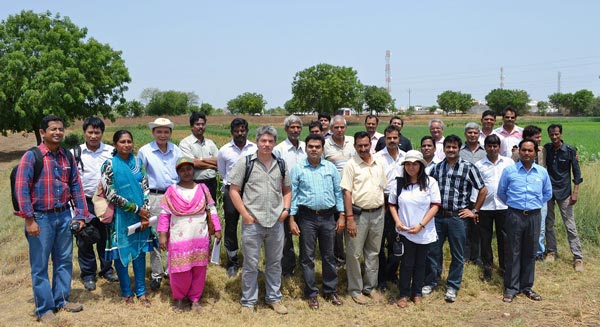 The session’s chairman added: “Our maize farmers have many choices regarding high-yielding varieties and technologies for optimal conditions, and they are experts in achieving high yields under such conditions. But when it comes to stress conditions they have very few choices, and that is where they need our intervention.”
The session’s chairman added: “Our maize farmers have many choices regarding high-yielding varieties and technologies for optimal conditions, and they are experts in achieving high yields under such conditions. But when it comes to stress conditions they have very few choices, and that is where they need our intervention.”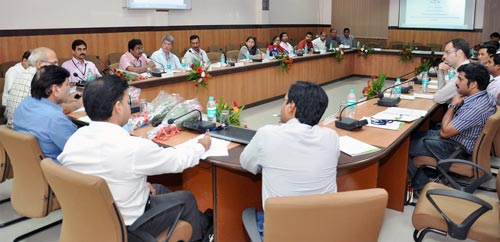 The farmer-scientist interaction produced very useful insights into the issues faced by maize farmers in the region and reiterated the importance of stress tolerant maize varieties for their livelihood. To conclude the day, farmers prepared and shared various maize dishes with the delegation.
The farmer-scientist interaction produced very useful insights into the issues faced by maize farmers in the region and reiterated the importance of stress tolerant maize varieties for their livelihood. To conclude the day, farmers prepared and shared various maize dishes with the delegation.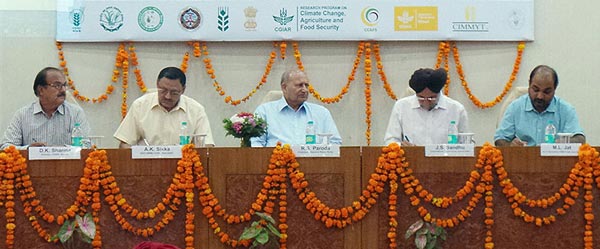
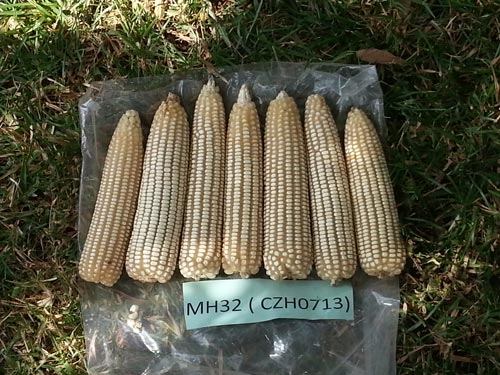 Three drought-tolerant maize hybrids performing well in drought-prone areas and tolerant of Malawi’s major maize diseases have been released in Malawi. The new hybrids, said a member of the Agricultural Technology Clearing Committee, will contribute to the subsidy program that has seen Malawi become self-sufficient in maize production and even export surplus maize to neighboring countries. They will also be important in mitigating climate change. “Maize accounts for over 70% of cereal production,” maize commodity team leader Kesbelll Kaonga explained the importance of maize for the country, adding that Malawians consume on average about 300 kg per year.
Three drought-tolerant maize hybrids performing well in drought-prone areas and tolerant of Malawi’s major maize diseases have been released in Malawi. The new hybrids, said a member of the Agricultural Technology Clearing Committee, will contribute to the subsidy program that has seen Malawi become self-sufficient in maize production and even export surplus maize to neighboring countries. They will also be important in mitigating climate change. “Maize accounts for over 70% of cereal production,” maize commodity team leader Kesbelll Kaonga explained the importance of maize for the country, adding that Malawians consume on average about 300 kg per year.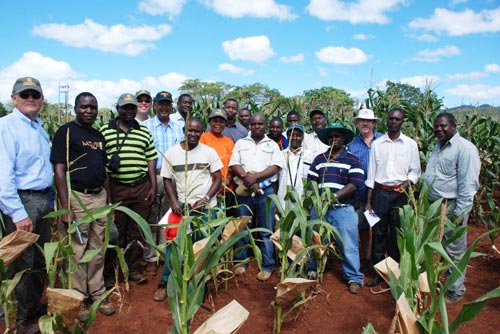 Covering 2,400 km, a multinational team toured Drought Tolerant Maize in Africa (
Covering 2,400 km, a multinational team toured Drought Tolerant Maize in Africa (